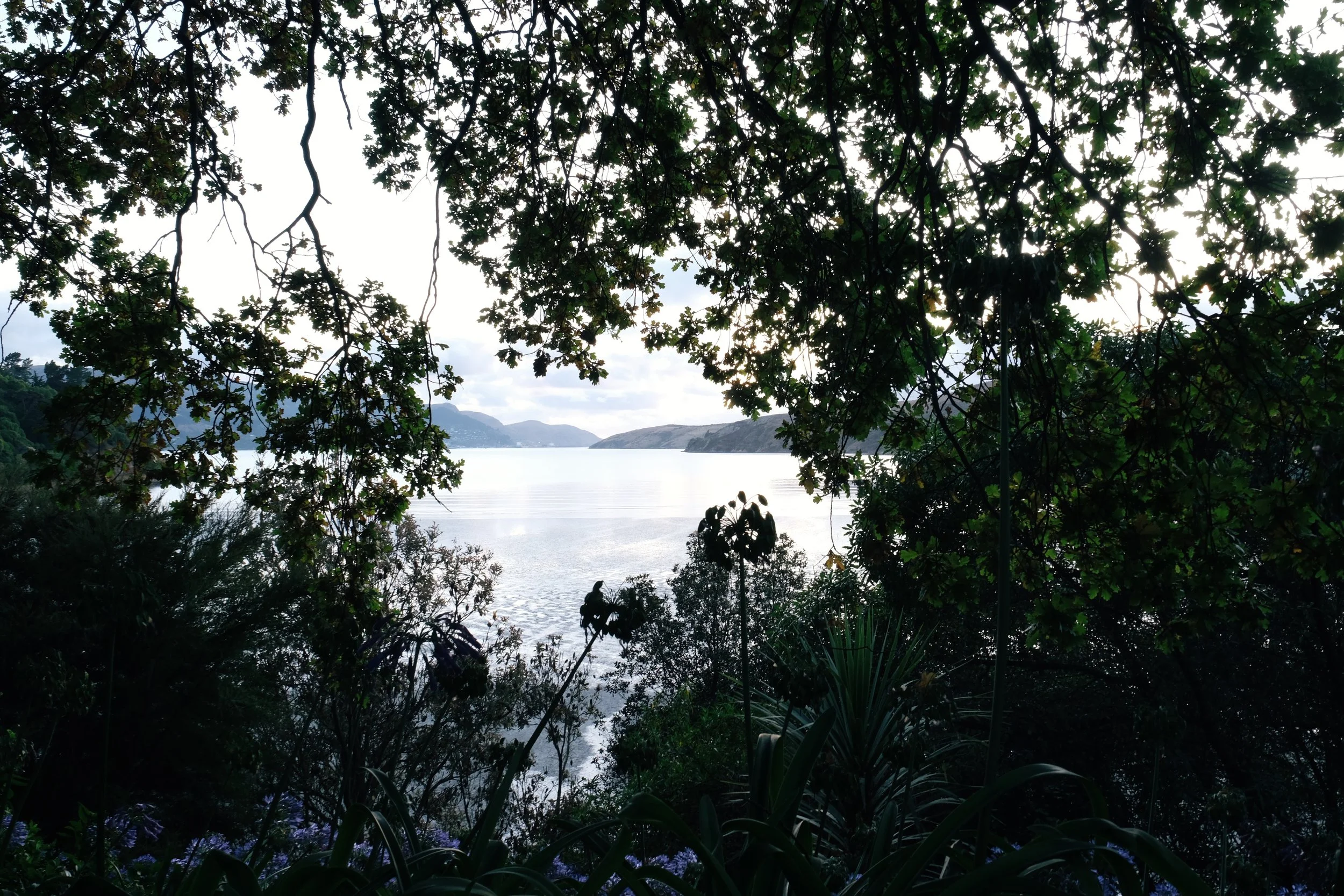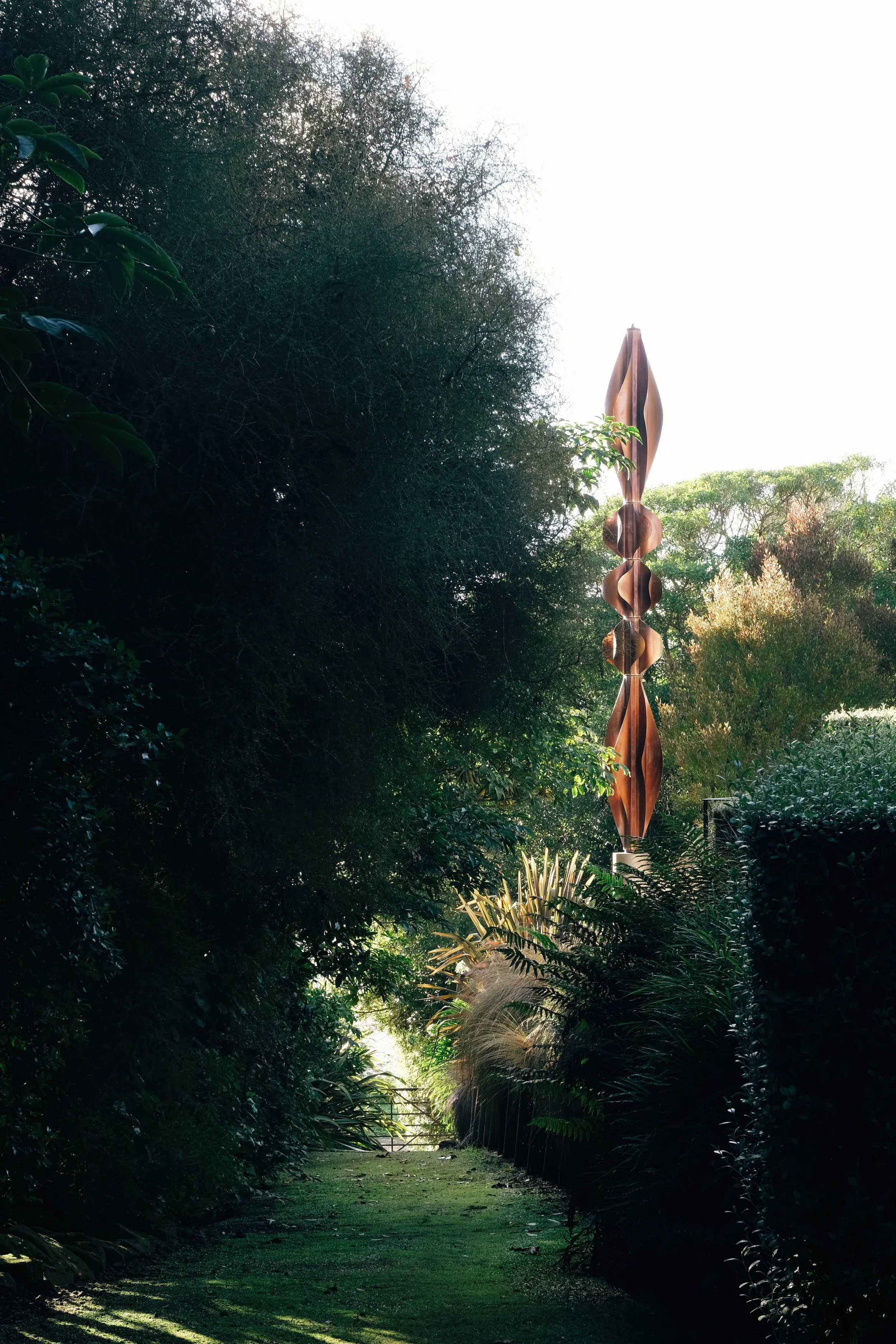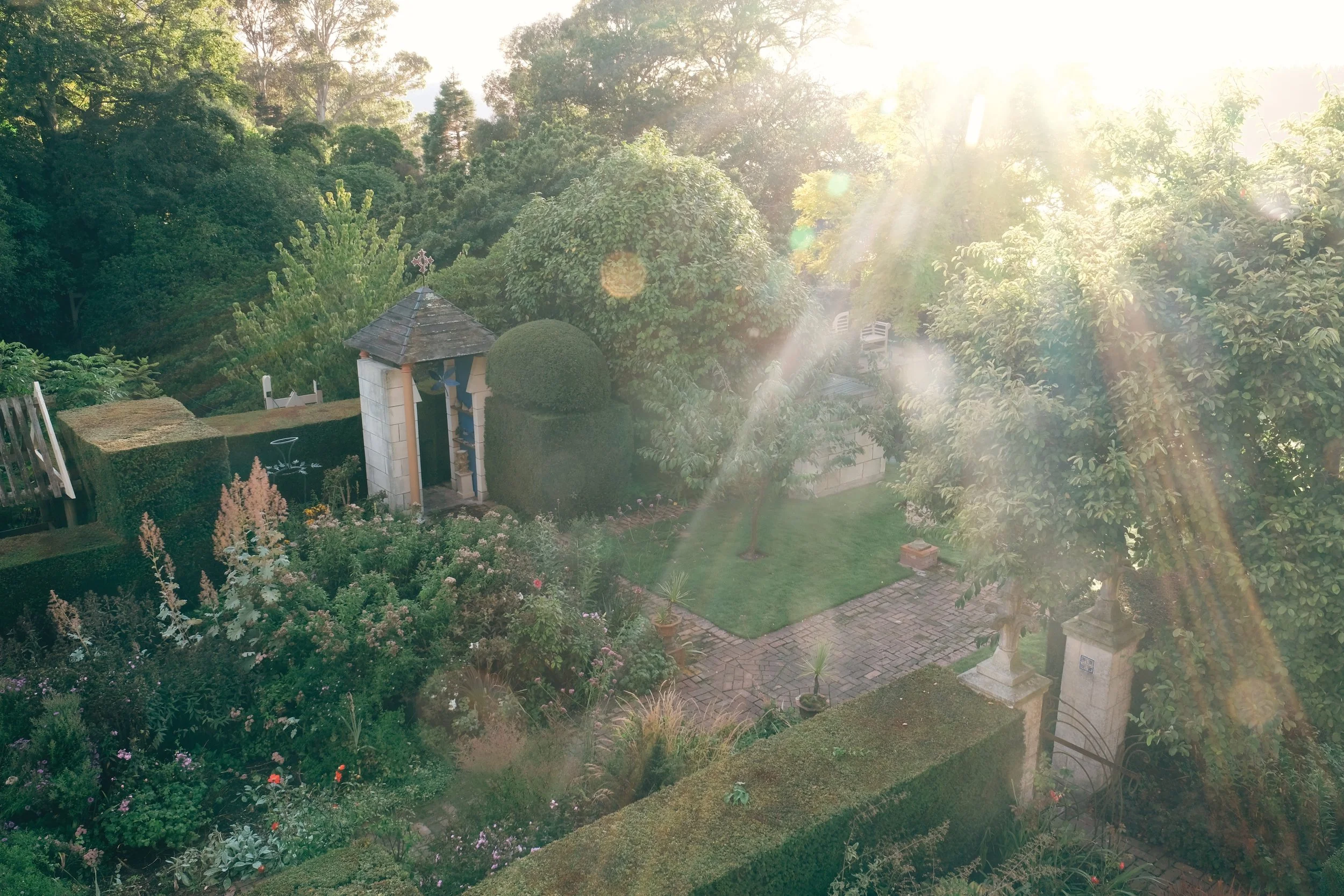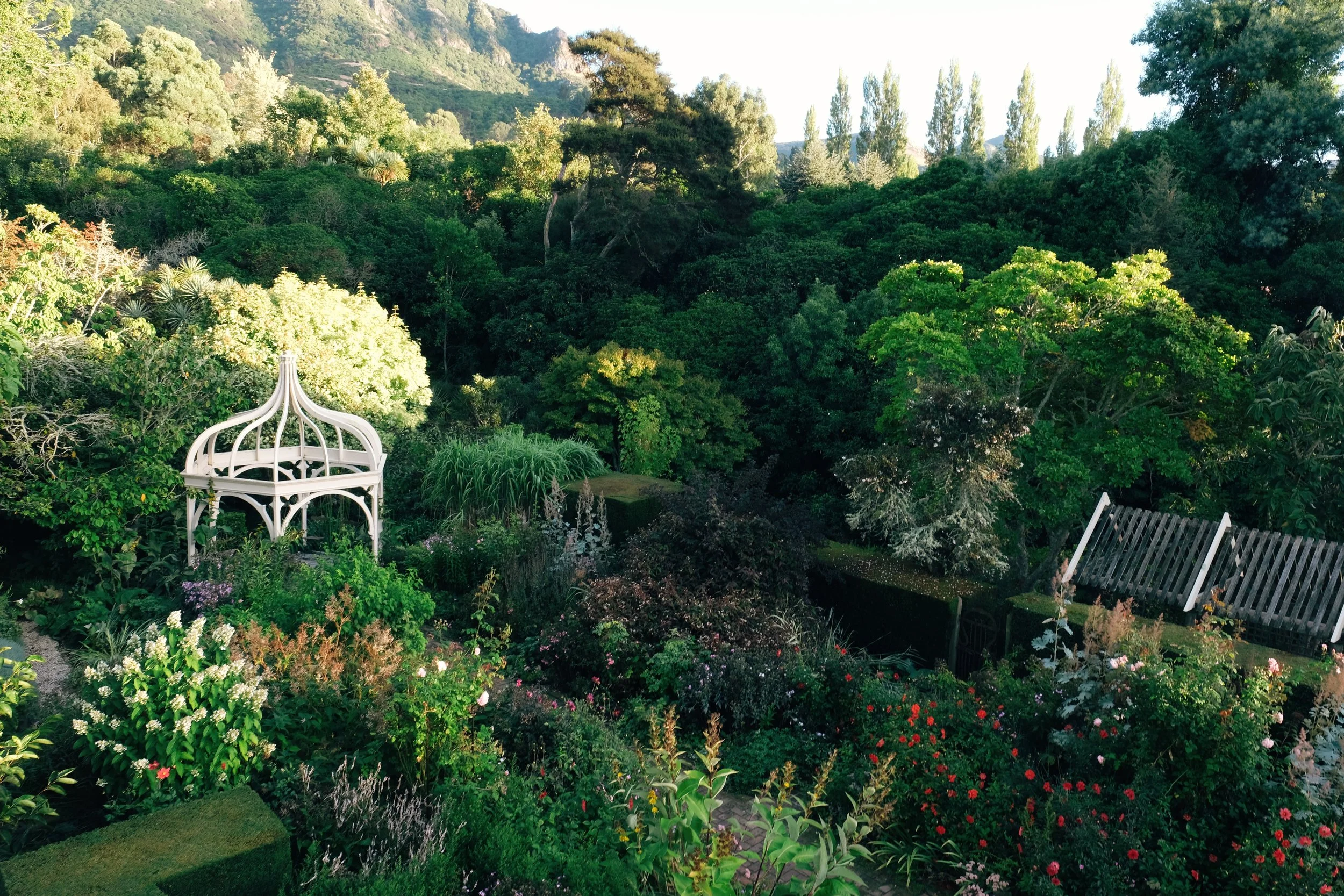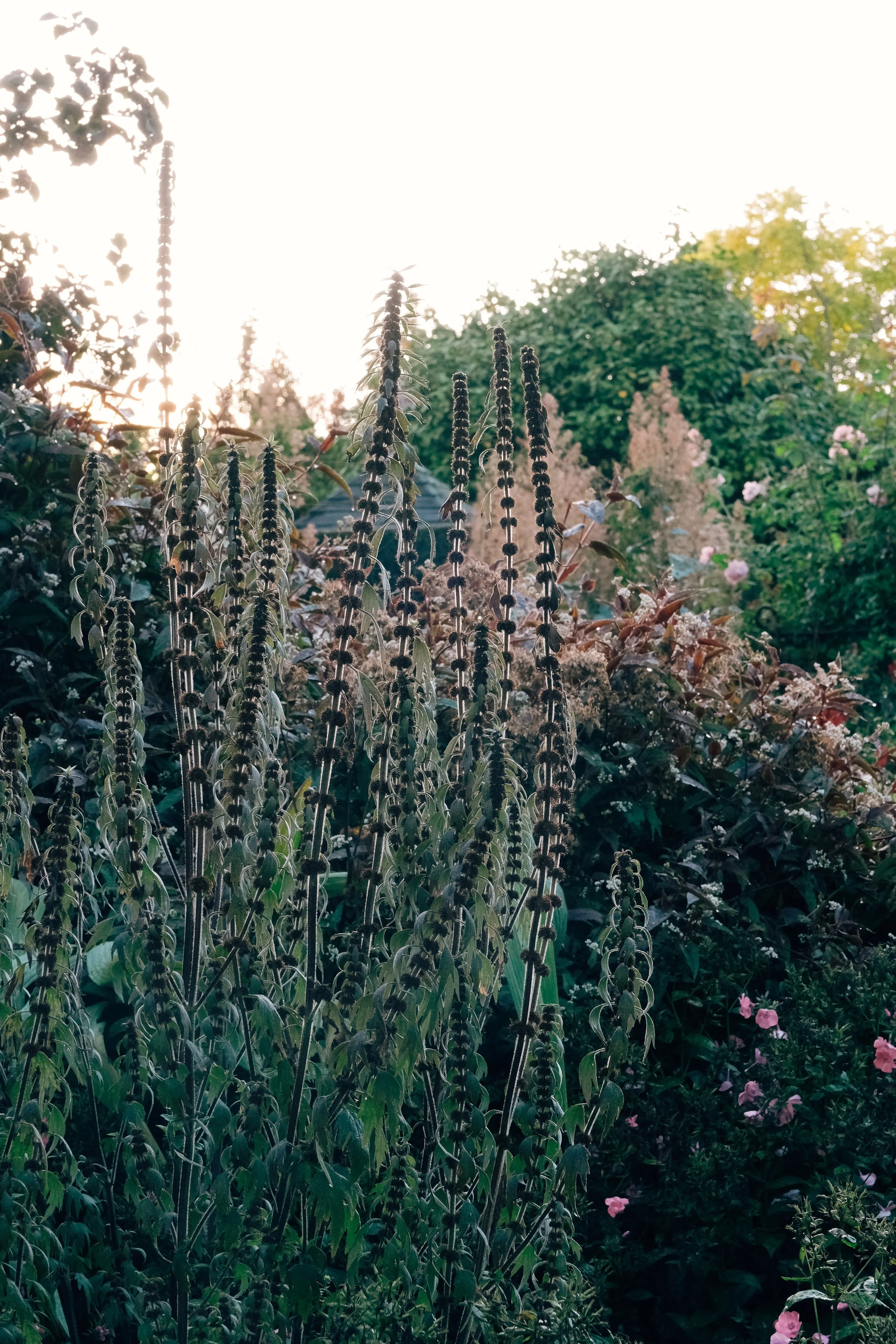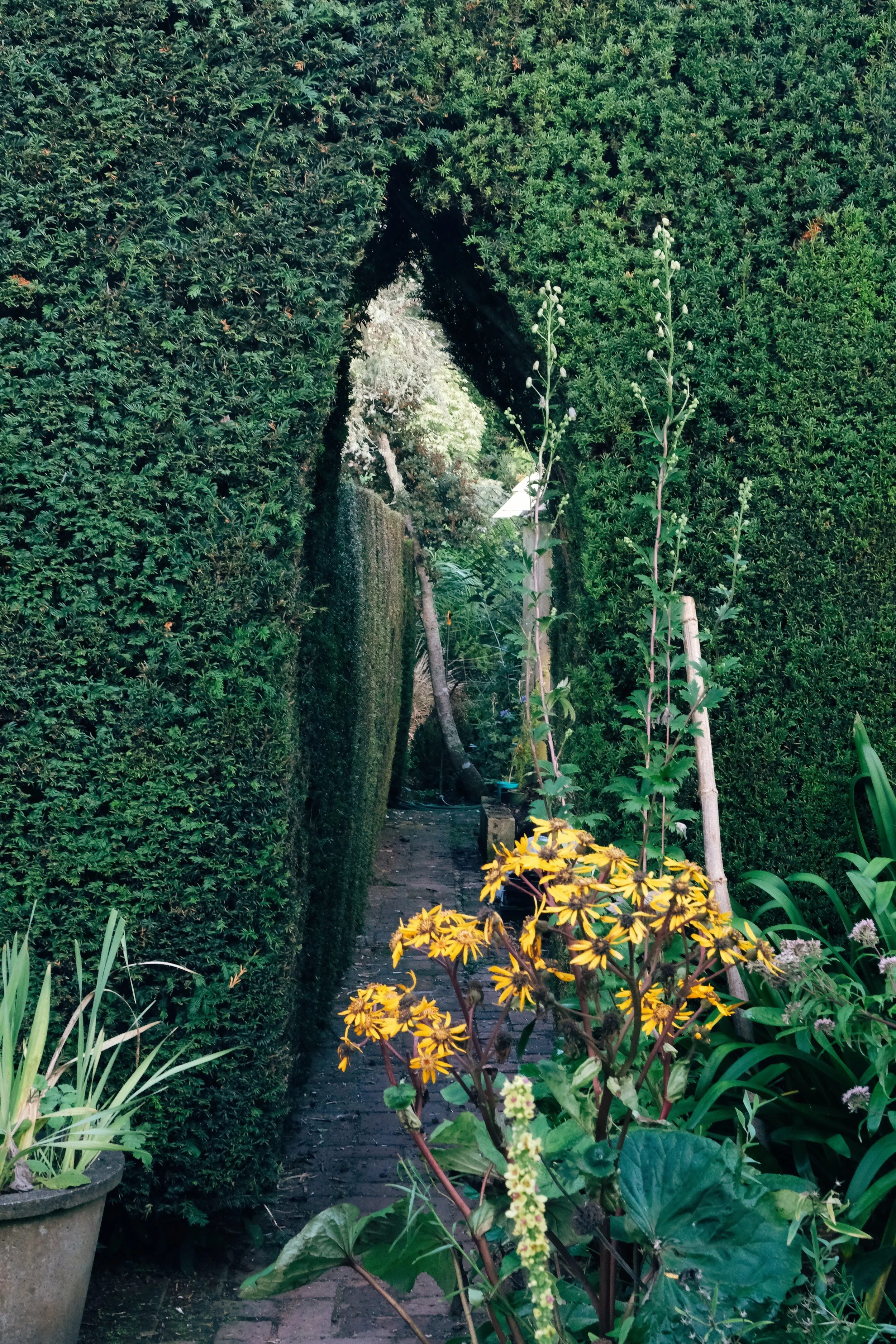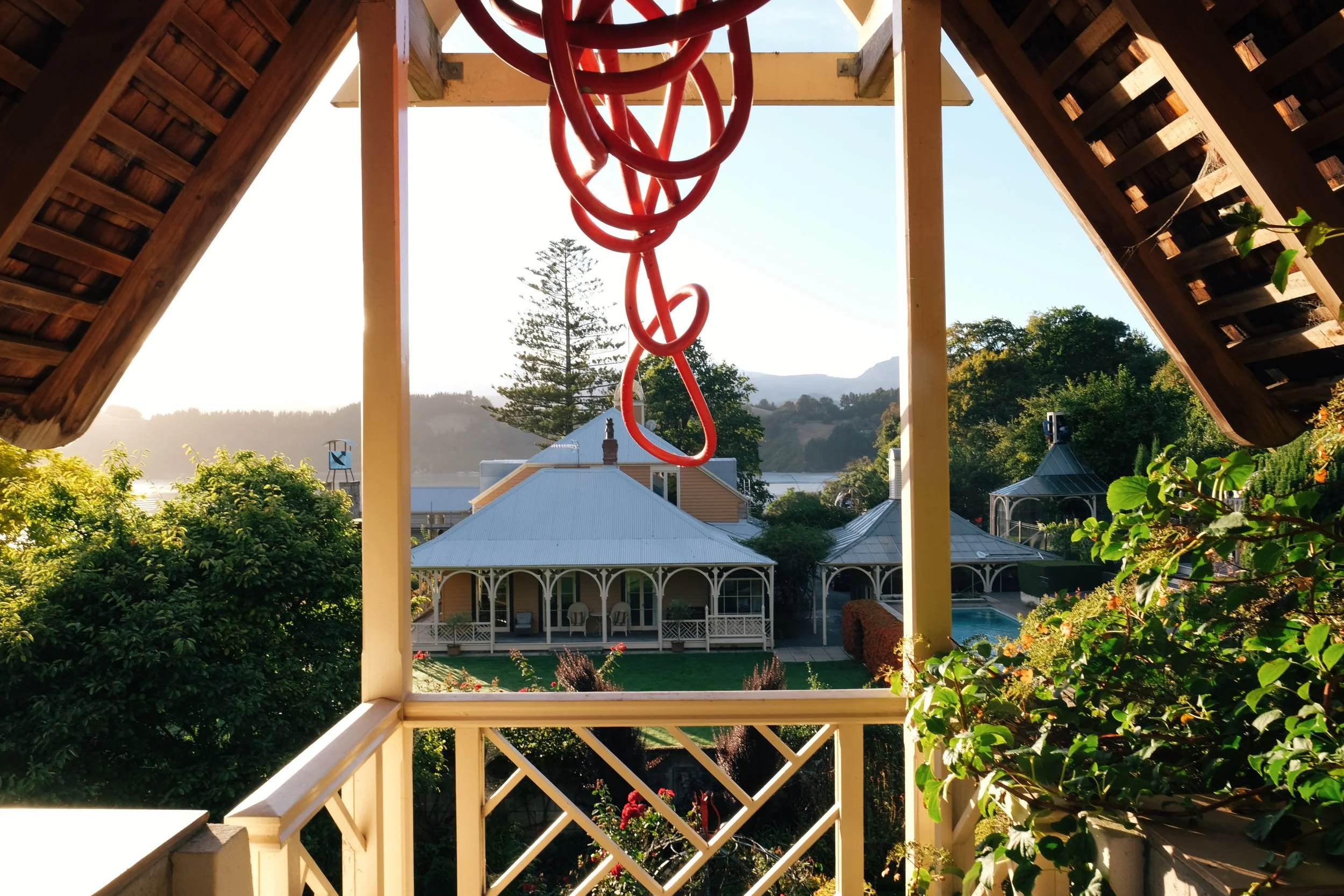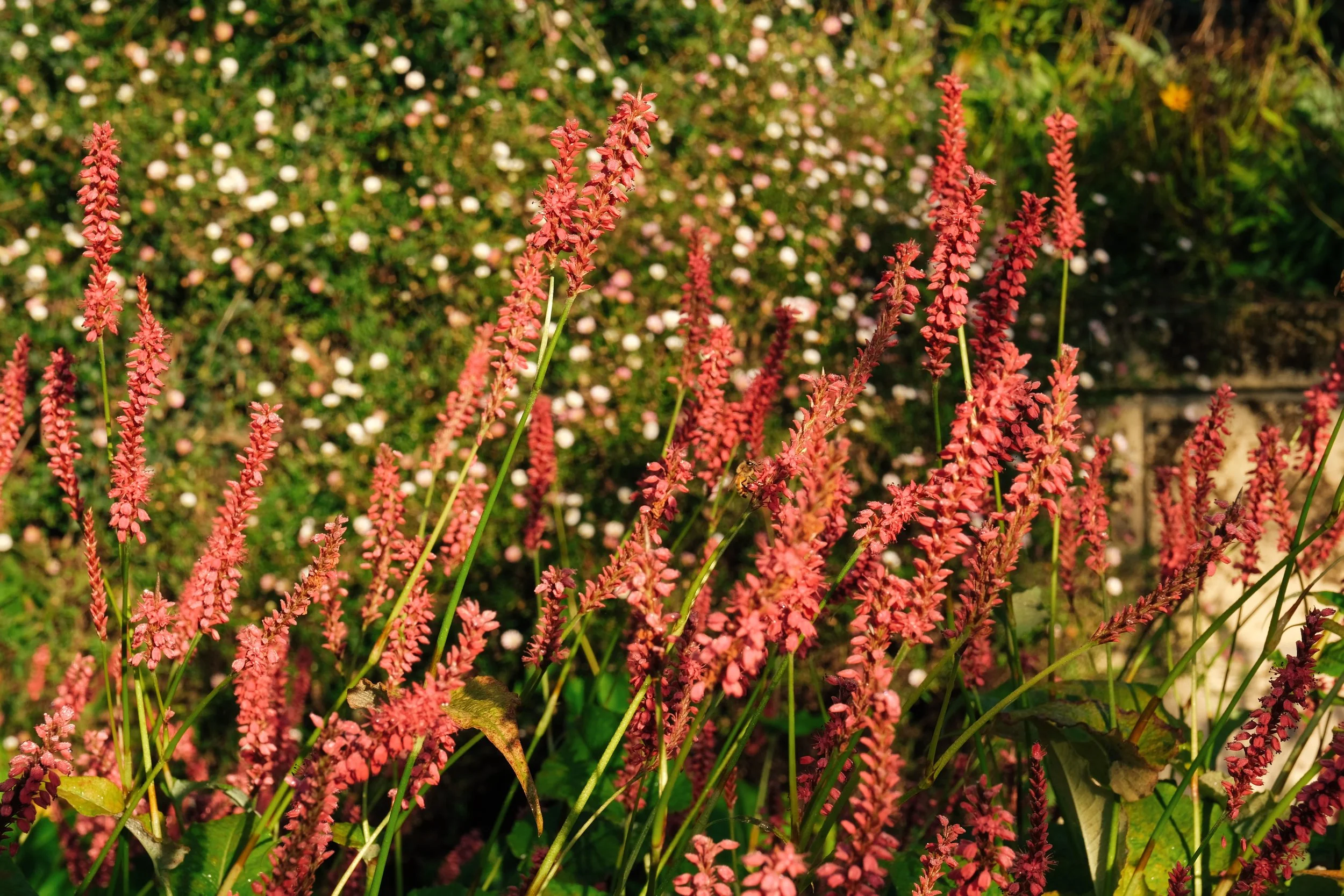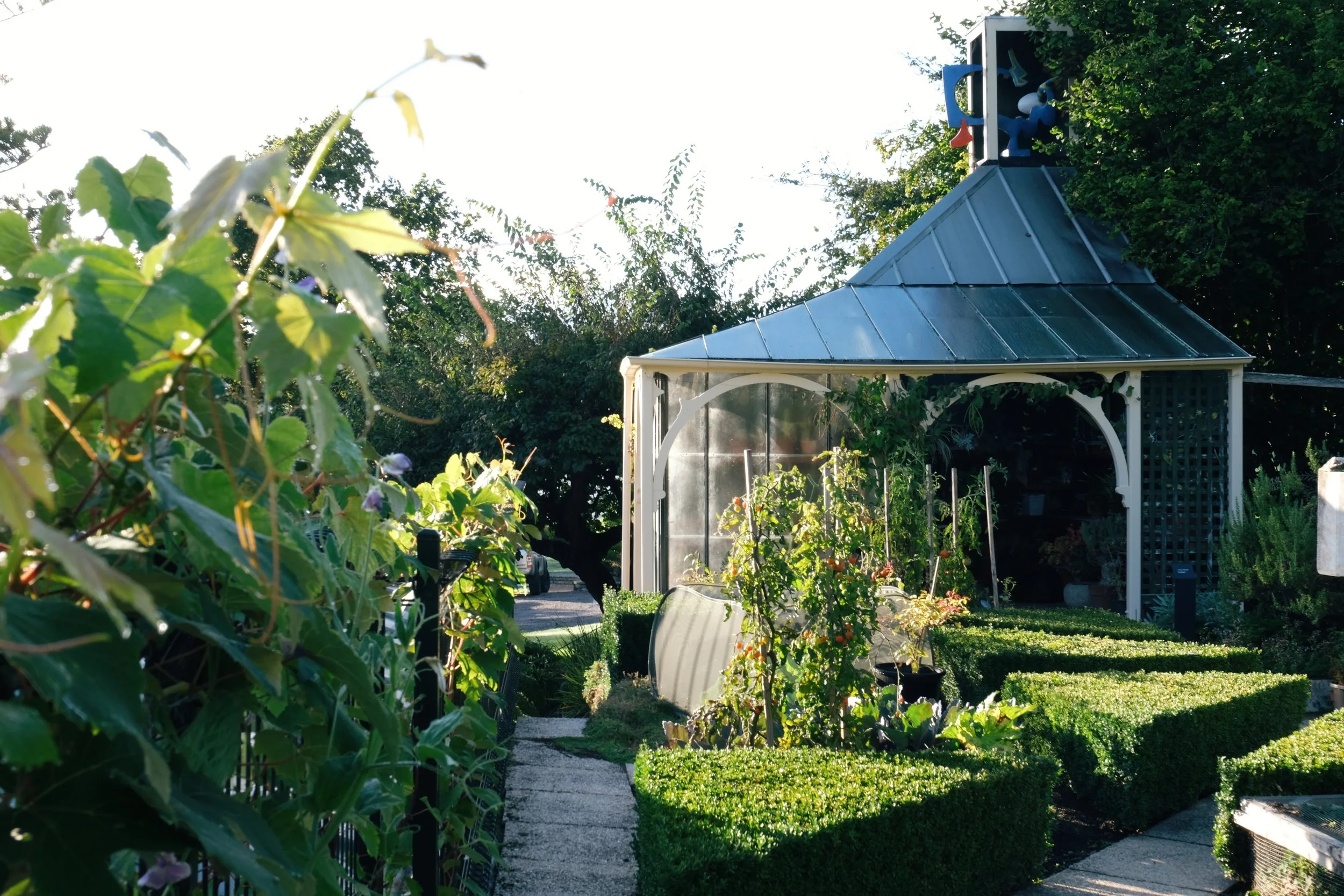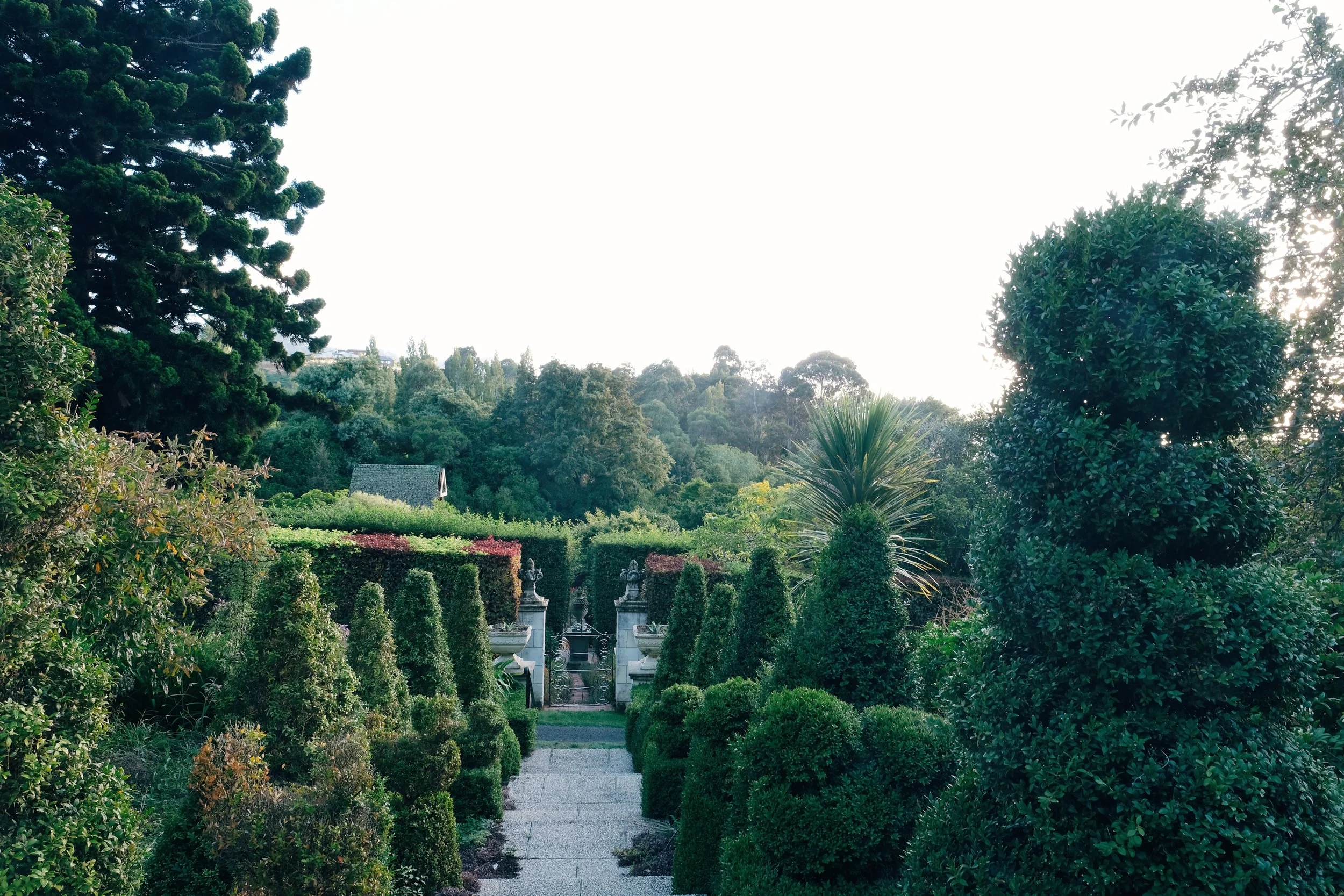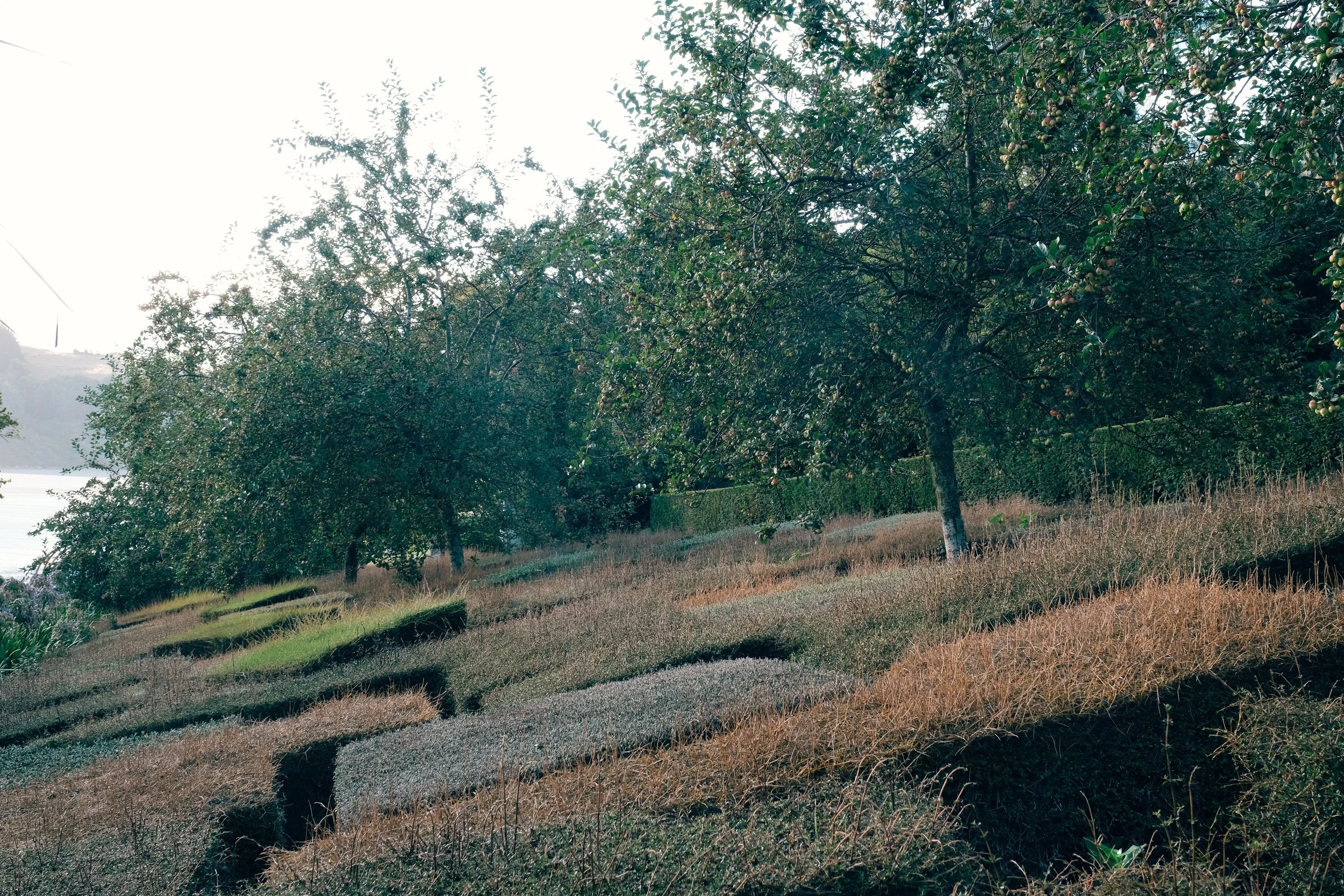GARDENLIGHT: Ohinetahi
/It felt secret and special to be to creeping around the edges of Ōhinetahi amid the glow of an early March dawn. And creep I did, as even the crunch of my heels on the gravel path felt jarring against the silvery stillness of Governor’s Bay and the ringing bird song of the local residents.
Since gardening had become a passion of mine, I had visited the garden numerous times over the years, which allowed me to set off on my favourite trajectory with little planning.
I aimed myself toward the weaving paths and imagination-capturing sculptures sloping down toward the bay. The large-scale installations settled into the landscape that hosts them as though grown at the same time, providing awesome moments of pause and juxtaposition in contrast to the swathes of clipped shrubs and frames created by swooping exotic trees. The spareness and calm of this side of the garden felt a fitting precursor to the intimate and diverse spaces to come.
Andrew Drummond’s ‘Armillary for Air’
Phil Price’s ‘Wiggly Wagon’
There is no denying that many gardens are supercharged by their borrowed landscape, and Ōhinetahi is no exception. The volcanic skylines and shifting tidal flats of the head of Lyttelton Harbour certainly inject a magical sense of place, but the garden is also a complete realm in itself. It’s possible to mindlessly explore as you are swept through gateways, scaling stairs and enticed along paths, taking in the endless rooms and dramatic changes in landscape as though a passenger on a ride.
Looking toward the heads of Lyttelton Harbour
Governor’s Bay has strong tidal movement being at the head of the harbour
Andrew Drummond’s ‘Vertical Form, Counter-Rotating’
Virginia King’s ‘Heart of Oak’ IS suspended above the creek.
A swing bridge plunges you into dense native planting, stopping you in wonder when you see the suspended Virgina King sculpture ‘Heart of Oak’ levitating in the tree tops above the stream. Andrew Drummonds ‘Vertical Form, Counter Rotating’ is a giant beacon through the canopy, sucking you toward it along the shaded track. The collection of artwork throughout the garden feels to me like punctuation marks, forcing you to pause and acknowledge each new changing gardenscape presented.
One of the highlights for me is the very generous herbaceous border and walled red garden. The added structure and formal layouts are a beautiful foil to the rich colourful planting. As is the essence of tradition mixed with whimsy at Ōhinetahi, at the centre of these areas is a tower offering a rare opportunity to admire the symmetry and balance of design from above.
It’s here too, from your crow’s nest, that you are drawn back out to the wider views of the harbour and the outside world of which you have been well and truly removed from.
View toward the house of the deep perennial border in its early autumn fade.
The border from the tower.
The gazebo at the end of the border as viewed from the tower.
The garden is criss-crossed with pathways creating a real sense of exploration and discovery.
Ōhinetahi means ‘place of a single daughter’. It was named by Manuhiri, son of
Te Rakiwhakaputa of the Ngāi Tahu iwi. Father to many sons, he had just one precious daughter.
After several changes of hands by European settlers, one of New Zealand’s first botanists, Thomas H Potts purchased the property in 1858, building the sandstone homestead as an addition to the existing small cottage and establishing his plant collection. Potts planted extensively with exotic trees including araucarias, blue gums, conifers, oaks, ashes and sycamores however on his death in 1888 the garden fell into neglect with most of his planting not surviving.
Ohinetahi homestead in it’s remodelled form post extensive redeisgn following the Christchurch earthquakes of 2010.
Original stone section of the homestead was reduced to two stories from three.
Looking through the rose garden to the newly remodelled tea house.
In 1976 architect John Trengrove and his artist wife Pauline purchased Ōhinetahi with her brother, renowned architect Sir Miles Warren. After restoring the homestead they cast their attention to the garden, taking on the challenge as amateurs with a new canvas. Their collective skills show through in the formally structured layout of garden rooms.
Over the years they expanded their attention to the native bush alongside the creek and the addition of two art galleries in celebration of New Zealand art and architecture.
Sir Miles Warren bought out the Trengroves in the 1980’s and the property became a calm refuge following his retirement from Warren and Mahoney in 1994. The first of the large Canterbury earthquakes in late 2010 rendered severe damage to the homestead with the central stone part of the structure largely collapsing. In an effort to repair the building, a redesign took place and found the two-storied form we see now, in reflection of the typical villas of its time.
The tower sitting at edge of the walled red garden.
View across the homestead and bay from the tower with Phil Price’s ‘Archtect’s Scribble’.
Tower view of the walled red garden.
Persicaria
On restoring the garden and homestead to its full glory, Sir Miles gifted Ōhinetahi to the city of Christchurch in 2012 by way of the Ōhinetahi Charitable Trust which continues to maintain and improve the 1.25-hectare property for public access to this day. It’s astonishing to realise that the property has been cared for by just a team of three with retiring Ross Booker as manager for 26 years, joined by his wife Liz 4 years ago to run the house. Mark Chandler has been the gardener for 11 years, joining the legacy of the Bookers as long-term custodians of the work done before them.
Looking across the main lawn to the pool house.
View from the tower of the pool and on to the vegetable garden.
Bagged grapes on the pool house looking through to the glasshouse.
Details of vegetable garden and glasshouse.
Long terraced views of traditional elements and mature native trees and exotics beyond.
Inspring use of clipped New Zealand native shrubs.
The swing bridge.
Woodland planting.
Ōhinetahi is a Six Star Garden of International Significance and open to the public from September to Easter annually. With the construction of a new pavilion to host functions, it will remain firmly an icon of Canterbury with many more visitors to enjoy this unique space.
This is truly a garden that offers as much inspiration in its scope, art and architecture as its diverse planting and combinations that could be translated into any space.
This is an expanded version of the article featured in my Stuff ‘Homed’ gardening column for beginners , The Press, Dominion Post and other regional papers on March 30th 2023
All words and images are my own, taken with permission at Ohinetahi garden, early March 2023.




